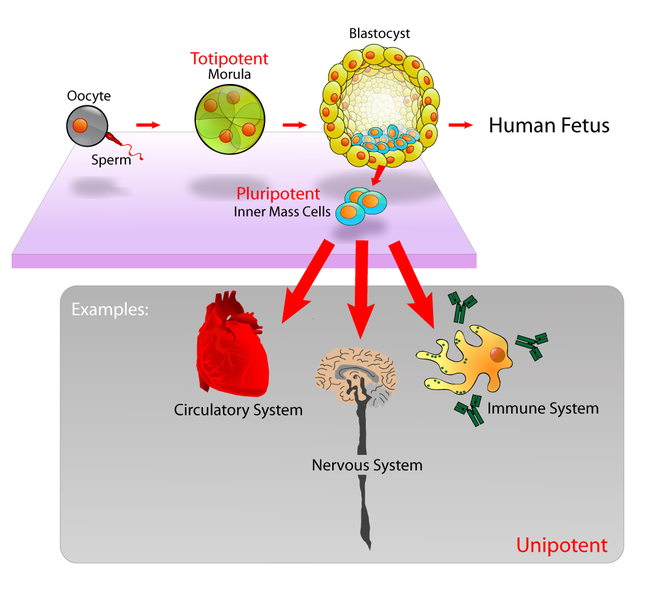Stem cells kills babies! Research isn’t worth murder!
The news and bad rep surrounding stem cell research creates a barrier to a very powerful area of study. Stem cells are cells that can become many different types of cells. Some are found in adults, but they tend to be able to become only a few cell types. The types with the most potential are found in newly formed embryos.

Source: http://en.wikipedia.org/wiki/File:Stem_cells_diagram.png
This “baby-killing” variety, called totipotent, can become any kind of cell. However, the next step down, pluripotent stem cells can become most types of cells. Pluripotent stem cells are also found early in development, and are difficult to collect without creating an embryo.
However, recent Nobel Prize winners John B. Gurdon and Shinya Yamanaka have proven that bodily cells can be reprogrammed to become stem cells. When a stem cell becomes a more specialized cell, such as an organ or bone cell, they lose DNA that’s used by other cells. They don’t need the extras to perform their functions.
Researchers managed to put back the DNA by using viruses that carried the deleted genetic information; this is possible since the entire genetic make up of a human is known. After the viruses did their job, chemical and protein signals finish the job.
All that’s needed to finish the reversion process are the right kind of cues, which are usually chemical or small proteins, to complete the reversion from a specialized cell to a pluripotent stem cell. Now we have stem cells without needlessly creating embryos.
So stem cells can be applied to research, but that doesn’t mean the technology is usable today, right? Actually, there are lots of applications already. Made famous by Christopher Reeve, stem cells can repair previously permanent damage. More exotic applications include cell printing and skin sprays, as well as fertility treatments. In addition, future applications include growing organs, like kidneys and bladders.
watch?v=80DhBLEhdzk&feature=related
Video Credit: 8tropos
The power of stem cells lies in their capacity to become any kind of cell in the body, and their potential truly seems limitless. Hopefully, the medical application of stem cells will be practical enough to be accessed easily and cheaply in the near future.
